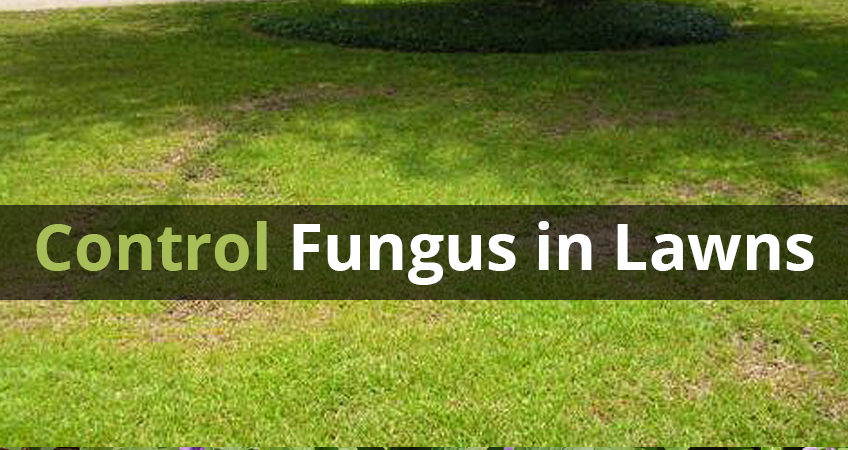Lawn fungal diseases take on a variety of forms – from dead-looking brown patches to highly visible spots, threads, rings, or slimes. And once they strike your yard, grass fungal diseases can be difficult to treat. Fortunately, the right lawn care practices can go a long way toward prevention and treatment; and in severe cases, a fungicide can help eradicate the spores to keep it from spreading. Here are some tips for preventing and treating fungal diseases in your lawn.
Below you will find information on identifying & controlling lawn fungal diseases
SUMMER PATCH:
Symptoms of summer patch include rings and circular patches of dead or dying turfgrass. Sometimes there is a center of relatively healthy grass in the “doughnut” or “frog-eye” patch. In addition, weeds or non-susceptible grass species may colonize the centers of patches where the diseased lawn has died. Summer patch symptoms are most severe in mid-summer, especially following frequent or heavy rainfall.
RED THREAD:
The symptoms and signs of red thread are distinctive. In the presence of morning dew or water from rain, a corral pink or reddish layer of gelatinous fungal growth (mycelium) can easily be seen on leaves and sheaths. Development of the disease is favored by cool (65 – 70°F), wet weather in the spring and autumn; it may also occur during warm or very cool to cold weather in the presence of plenty of surface moisture or at snowmelt in February and March. Red thread also occasionally occurs during prolonged overcast and drizzling rainy weather in the summer.
DOLLAR SPOT:
Long periods of high humidity or frequent rainfall may cause severe Dollar Spot outbreaks. Watering turf at the wrong time may extend this susceptible period and increase the incidence of disease. Most outbreaks occur when temperatures are moderately warm and change rapidly, as with warm days and cool nights. Infected areas 4 inches or larger may run together, causing large patches. Irregular patches to 12 feet wide are not uncommon.
LEAF BLIGHT (MELTING OUT):
Leaf blights are present in every established lawn. This disease typically will cause serious damage during extreme weather conditions involving frequent wetness, high temperatures and when improper lawn care practices aggravate the disease problem. Keep in mind that mowing can increase infection in several ways: wounds are made that allow easy penetration by the fungi, especially when the leaf blades are shredded by dull mower blades/mowers and foot traffic spread spores.
